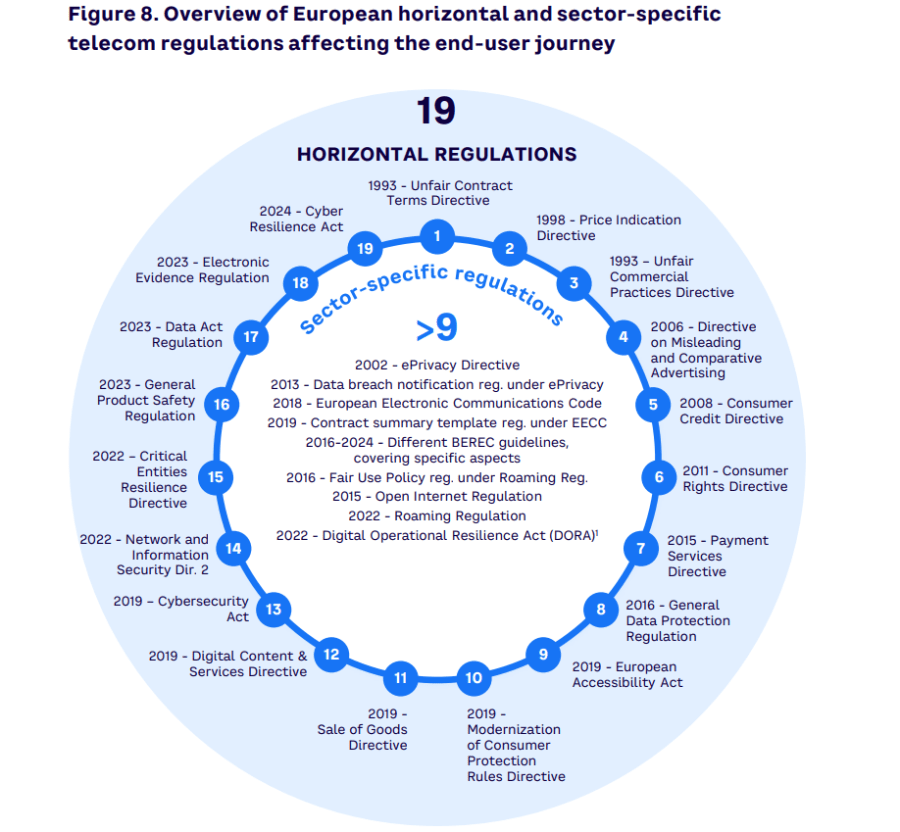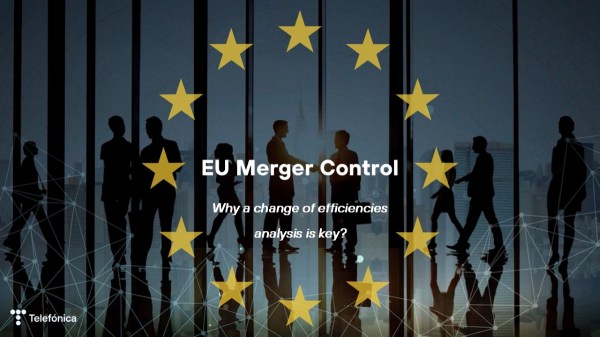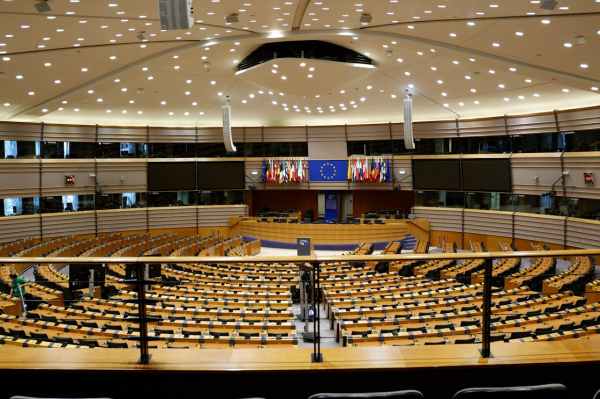A recent study commissioned by Connect Europe and conducted by Arthur D. Little draws attention to the complexity of the current EU telecoms regulatory framework, highlighting the urgent need for regulatory simplification and refocusing. The report identifies 34 regulatory obligations, of which 9 are sector-specific regulations and 19 are horizontal regulations.

The study shows that the telecoms sector needs a simplification approach that goes beyond the objective of reviewing red tape and reducing reporting obligations.
In the case of the telecommunications sector, the overlap that has been created over the years between the horizontal regulation common to all economic sectors and the specific regulation created for the telecommunications sector needs to be addressed. It is also necessary to address a process of regulatory simplification that corrects the existing imbalance between telecom operators and big tech companies competing in the digital ecosystem.
At a time when the European Commission is discussing broad regulatory simplification, the report presents a clear and workable roadmap for simplifying telecoms regulation and ensuring a level playing field in the European telecoms market.
Addressing overlaps between sector-specific and horizontal regulation
According to the report, the current EU telecoms regulatory framework imposes a complex set of 34 different obligations across the entire lifecycle of a European telecom’s customer.
A particularly clear opportunity for regulatory simplification lies in addressing overlaps between horizontal legislation, such as the General Data Protection Regulation (GDPR), general consumer protection rules or the NIS2 Directive , and sector-specific obligations set out in instruments such as the European Electronic Communications Code (EECC).
The report recommends removing sector-specific requirements related to consumer information, transparency and duration and termination of contracts, and relying on existing horizontal legislation in these areas. Pre-contractual and transparency obligations should focus strictly on information that directly supports consumer decision-making, and not on technical or administrative disclosures that do not add value for users.
In addition, the report calls for clarification of the relationship between horizontal and sectoral rules. In areas already covered by the GDPR, the NIS2 or general consumer protection legislation, horizontal rules should be the default framework. Sector-specific rules should only be introduced in cases of clear need.
The recommendations provided in the report set out a clear path of simplification:
- Streamline overlapping obligations by using horizontal consumer protection rules (e.g. the GDPR or the Consumer Rights Directive (CRD)) rather than overlapping sectoral rules.
- Focus contractual rules on information that allows meaningful comparisons rather than on technical details.
- Eliminate sector-specific data protection rules by repealing the ePrivacy Directive and consolidating the principle of confidentiality of communications, as the only remaining sector-specific element, within harmonising legislation (e.g. in the GDPR or the Digital Networks Act (DNA)).
- Abolish obsolete universal service obligations and replace them with targeted public support (e.g. broadband vouchers).
- Exclude B2B offers from consumer protection obligations under the EECC, recognising their specific nature and needs.
Ensuring balance in the telecoms market and the digital ecosystem
The report underlines the importance of applying the principle of functional equivalence in a proportionate manner, ensuring that users receive consistent protection across all substitutable services. Rather than replicating legacy rules across the digital ecosystem, the focus should be on reassessing whether existing sector-specific obligations are still justified.
From this perspective, the report advocates extending a limited set of necessary obligations to digital platforms offering comparable services. It highlights the need to implement rules on switching and confidentiality of communications to ensure that users enjoy the same safeguards regardless of the type of service provider. This would contribute to a more balanced regulatory environment.
In addition, to support innovation while maintaining regulatory clarity, the report calls for clearer EU guidance on specialised services under net neutrality rules and recommends extending the principles of the Open Internet Regulation (OIR) to other parts of the digital value chain. In the year 2025, it is difficult to justify applying neutrality principles to the network in the interest of achieving an open internet, while indicating that these same principles would not be necessary in other areas such as operating systems, cloud, or App-Stores. The dramatic change in the digital ecosystem calls for a regulatory overhaul to ensure equal treatment and opportunity for all companies participating in the ecosystem.
As the report points out, the current net neutrality framework creates a structural imbalance in the digital value chain. Internet access providers remain subject to strict obligations under the OIR, while Big Tech companies, which supply most of the traffic and exercise increasing control over content distribution, application behaviour, routing and quality of service, are not subject to equivalent rules.
The report again provides a clear roadmap for advancing balance in the market:
- Extend key obligations, such as switching and portability rights and confidentiality of communications, to other digital providers offering functionally equivalent services.
- Clarify net neutrality to enable innovation: allow for a more flexible framework, in line with innovation-friendly regulators (e.g. Ofcom).
- Create a whitelist of permitted specialised services to provide legal certainty.
- Reflect the wider digital value chain, ensuring that obligations apply equally to all key players, such as operating systems, so that consumers enjoy a uniform experience across the digital value chain and across all players.
A unique opportunity to redress the balance of European telecoms regulation
As the European Commission prepares its new legislative agenda, there is a clear opportunity to rethink telecoms regulation. The Digital Networks Act (DNA) with its focus on simplification, fairness and consistency would go a long way to redressing the balance and boosting Europe’s competitiveness.
Europe’s connectivity sector does not lack ambition or capacity, but is constrained by a legacy of excessive and inconsistent regulation. With targeted and pragmatic reforms, the EU can unlock the potential of a digital single market that works for consumers, businesses and the wider economy.










